Art Studio Science Fair
We recently had an afternoon of science-centered art activities in the Art Studio for our monthly Special Sunday program. Here is a report on the day by Beth and Camille, two of The Art Studio’s interns who designed and hosted the Art Studio Science Fair!
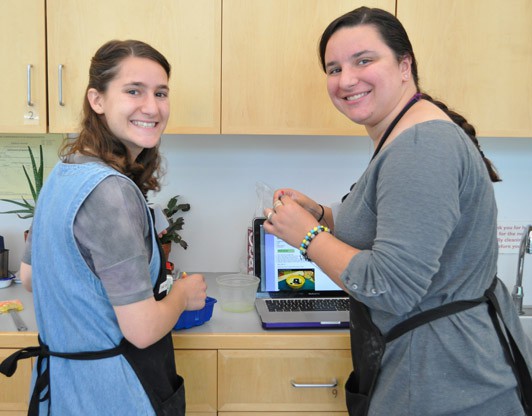
After spending time together flipping through some of the many art and activity books in The Studio’s Resource Center, we found ourselves gravitating towards art activities with non-traditional materials, like shaving cream, baking soda and vinegar. With guidance from Diana, we realized that a “science fair” theme for the day would be a great opportunity for visitors to make art with some non-traditional materials. Some of the art would be more about the creating and experimenting process and enjoying the moment rather than making something to take home.
The Studio Science Fair was split into three projects divided by basic scientific experiments that you can also try at home. Fair warning that these projects are messy but are perfect for children who love sensory experiences!
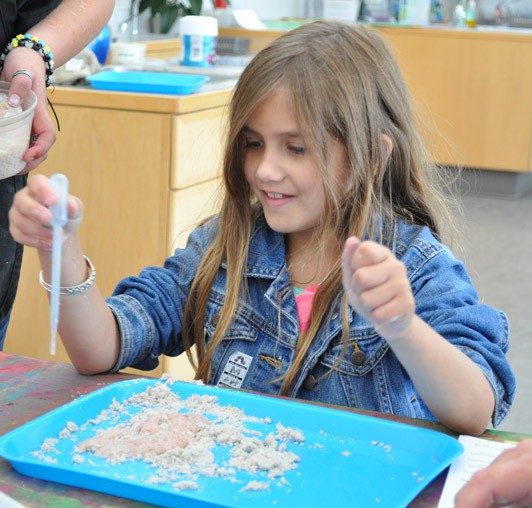
Chemical Reactions
Each visitor got a big scoop of our special dough, which was a mixture of:
- 1 cup all purpose flour
- about 1/2 cup vegetable oil
- 1 cup baking soda
- (about) a tablespoon powdered drink mix like Kool Aid to add a fruity smell (optional)
- Small cup of vinegar
- whisk or fork for mixing
- measuring scoops to mold the dough
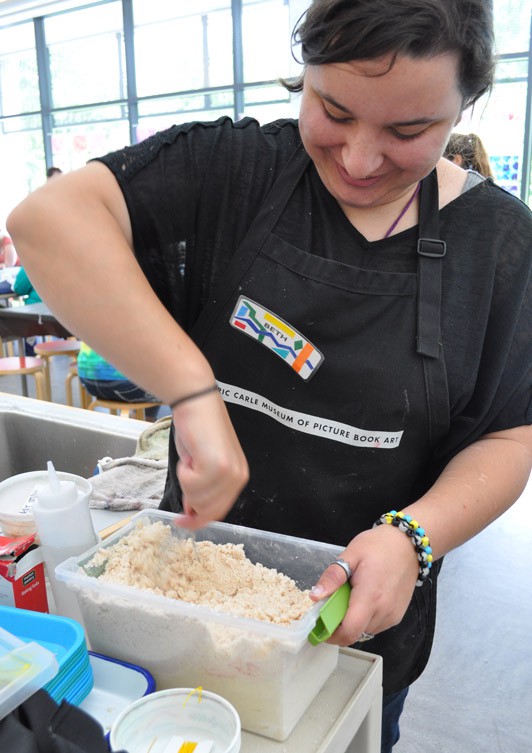
After playing with their dough and exploring its properties when it’s dry (such as its texture, smell, and sandy consistency), guests were given a small cup of vinegar and a pipette.
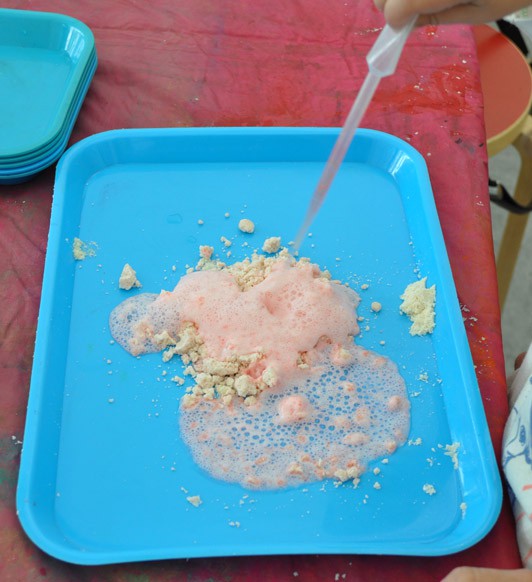
When vinegar and baking soda interact, they create a new substance, which produces a chemical reaction. The foamy results were a big hit! Children loved carefully adding drops of vinegar to the dough and watching the way the substance changed. Many took the experiment to the next level, creating a sort of vinegar-infused goop that they could mold and squish.
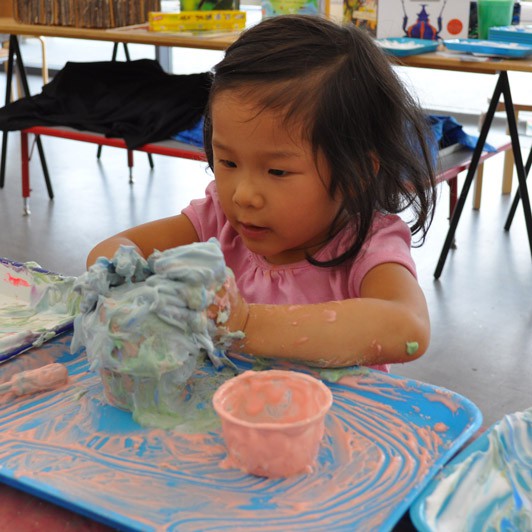
Absorption
At the next table we had a project centered around absorption, or chromatography; when a gas or a liquid flows through a stationary substance.
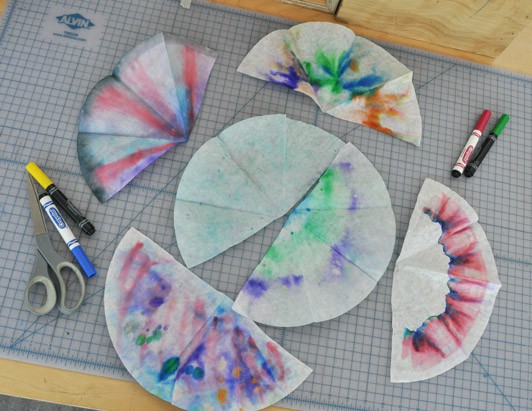
All you need is:
- Coffee filters
- Washable magic markers
- Spray bottle filled with water
- Deli cup of water
- A few trays
- scissors (optional)
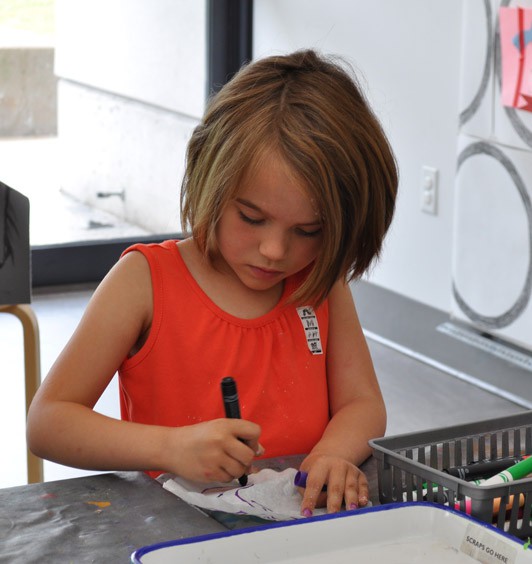
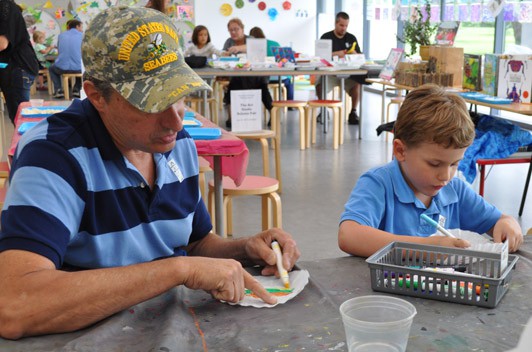
Guests decorated a coffee filter with markers, and then dipped, dunked, or sprayed their creation with water.
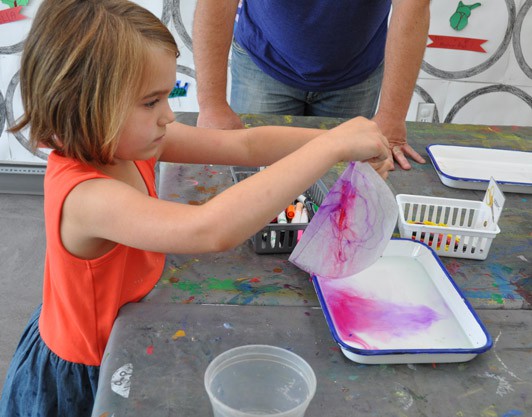
As the water and marker dye mixed, the colors ran slowly or quickly depending on the method used. Once dry, the dyed coffee filter papers can be used to to collage or make into paper flower sculptures, like the ones on Instructables here.
Hydrophobic Vs Hydrophilic
This experiment works through the interaction between substances that are hydrophilic (attracted to water) and hydrophobic (repel water).
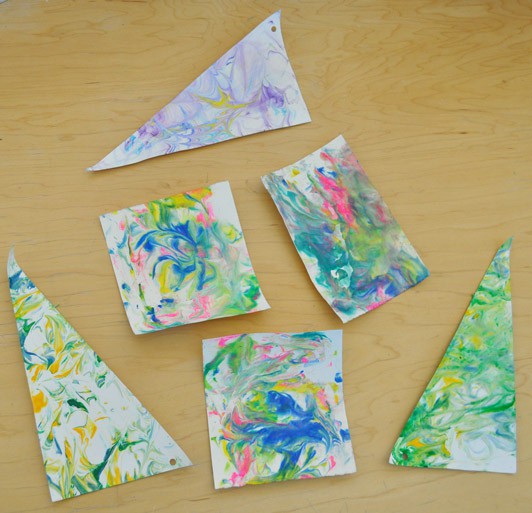
While paint and paper are hydrophilic, shaving cream foam has both hydrophilic and hydrophobic properties, it suspends the paint in a formation that comes out even more vivid on the paper, the look of marbled paper.
All you need is:
- Shaving Cream
- Baking Sheet/Pan (to put shaving cream in)
- Tempera, Liquid Watercolor paint or food coloring
- Pipettes
- Cardstock or Thick Paper
- Coffee Stir/Sticks
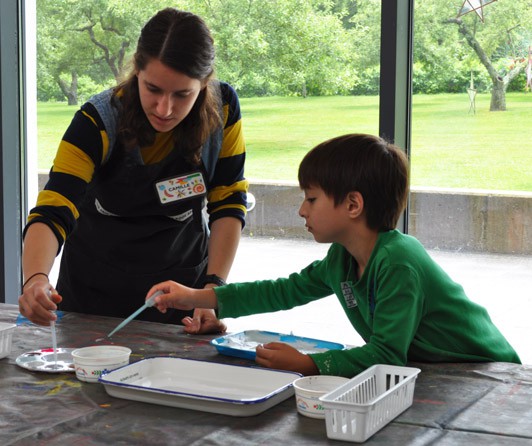
Guests especially loved the process of swirling the paint. Many took time to observe what happens when you mix and blend colors together.
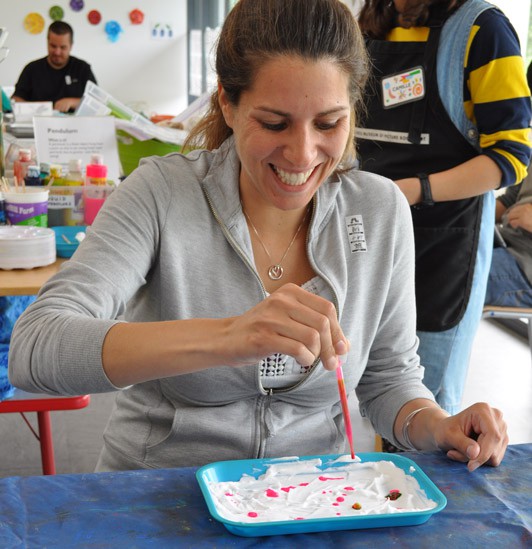
Visitors used pipettes to drip liquid watercolor into a small tray of shaving cream, and then used a stick to swirl their paint around. They then pressed a series of cardstock papers into their shaving cream designs, and after a few minutes of letting the papers sit with the shaving cream mixture, scrape it off to reveal the design that had soaked into the paper.
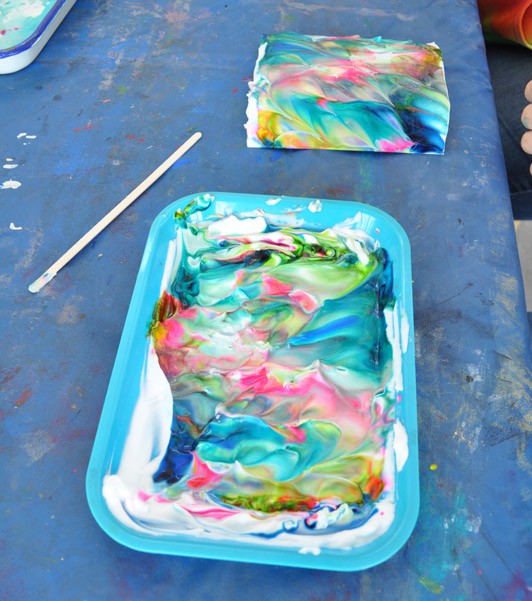
Cleanup
For the science fair cleanup we threw most of the leftover foam and dough into the garbage instead of down the sink. These projects are also safe to try outside and wash away with a garden hose.
Reflection
It was an exciting process to research and plan the different activities and watch guests having so much fun with the materials! It was a challenge at first narrowing down our many ideas and adapting them to in The Studio’s guests and for readers at home. Diana mentioned that this is the first Art Studio Science Fair, and we hope it becomes an annual tradition!
